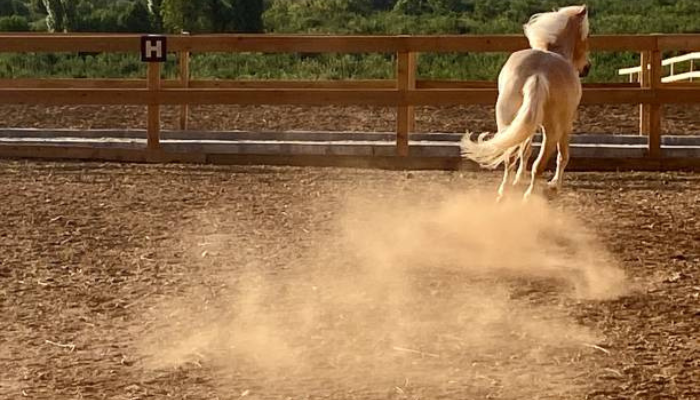A lush, green lawn can transform the appearance of any property, adding beauty and curb appeal. However, maintaining a crack-free lawn requires knowledge, effort, and the right tools. In this blog article, we will explore the importance of a healthy lawn, common lawn problems, tips, and tricks for proper care and maintenance, choosing the right turfgrass, essential tools and equipment, step-by-step guide to repairing and preventing cracks, seasonal lawn care tips, and ultimately, achieving a crack-free lawn and enjoying the benefits.
Understanding the Importance of a Healthy and Well-Maintained Lawn
A healthy and well-maintained lawn not only enhances the visual appeal of your property but also offers numerous benefits.
Firstly, it provides a safe and comfortable space for recreational activities and relaxation. A well-maintained lawn can also help in keeping the surrounding environment cool by absorbing heat and reducing the overall temperature.
Additionally, a healthy lawn acts as a natural air filter, trapping dust and pollutants and releasing clean oxygen. Furthermore, a beautiful lawn can increase the value of your property, making it more appealing to potential buyers.
Common Lawn Problems and How to Identify Them
Before we delve into the solutions, it’s important to identify common lawn problems that may lead to cracks. One common issue is compacted soil, which occurs when the soil becomes dense and hard, limiting the movement of air, water, and nutrients.
Another problem is thatch buildup, which is a layer of dead grass, roots, and other organic matter that accumulates between the soil and the living grass. Weeds and invasive grasses can also cause problems by competing for resources and taking over the lawn.
Additionally, improper watering, inadequate fertilization, and pest infestations can all contribute to the deterioration of your lawn.
Tips and Tricks for Proper Lawn Care and Maintenance
Maintaining a crack-free lawn requires consistent care and attention. Start by mowing your lawn at the appropriate height, as cutting it too short can stress the grass and lead to cracks. Regular watering is essential, ensuring that the soil is moist but not waterlogged.
Be mindful of the weather conditions and adjust your watering schedule accordingly. Fertilizing your lawn with the appropriate nutrients will promote healthy growth and help prevent the development of cracks.
Additionally, aerating the soil will alleviate compaction and improve the movement of air, water, and nutrients. Finally, regular weeding and pest control measures should be implemented to keep your lawn free from unwanted invaders.
Choosing the Right Turfgrass for Your Climate and Soil Type
Selecting the right turfgrass for your specific climate and soil type is crucial for maintaining a healthy and crack-free lawn. Different grass species have varying tolerance to heat, cold, drought, and shade.
Conduct research or consult with a local horticulturist to determine which turfgrass variety will thrive in your region. Consider factors such as sunlight exposure, average rainfall, and temperature fluctuations.
Soil type is another important consideration, as some grasses prefer sandy soil, while others thrive in clay or loam. By choosing the appropriate turfgrass, you can ensure that your lawn remains healthy and resilient against cracks.
Essential Tools and Equipment for Maintaining a Crack-Free Lawn
To effectively maintain your lawn and prevent cracks, having the right tools and equipment is essential. A high-quality lawn mower with adjustable cutting height is crucial for regular and proper mowing.
Aerator shoes or a mechanical aerator can help alleviate soil compaction. A sprinkler system or hose with an adjustable nozzle is necessary for efficient watering. Fertilizer spreaders and hand rakes are useful for evenly distributing nutrients and removing thatch.
Additionally, a sturdy wheelbarrow, a garden hose, and a rake are basic tools that every lawn owner should have. Investing in these tools will make your lawn care tasks easier and more effective.
Step-by-Step Guide to Repairing and Preventing Lawn Cracks
If your lawn already has cracks, repairing them is crucial to prevent further damage. Begin by removing any debris or dead grass from the cracks using a rake or a stiff brush. Next, fill the cracks with a suitable patching material, such as a mixture of soil, sand, and grass seed.
Gently tamp down the patching material to ensure it is level with the surrounding ground. Water the patched areas thoroughly and keep them moist until the grass seed germinates and fills in the cracks. To prevent future cracks, it is important to address the underlying causes.
Regularly aerate the soil, improve drainage, and adjust your watering and fertilization practices as needed.
Seasonal Lawn Care Tips for Year-Round Beauty
Maintaining a crack-free lawn is a year-round endeavor. In spring, remove any thatch buildup, overseed thin areas, and apply a slow-release fertilizer. Summer requires proper watering to ensure your lawn remains lush and healthy.
Avoid watering during the hottest parts of the day and adjust your watering schedule based on rainfall and temperature. In the fall, continue regular mowing and consider aerating and overseeding to promote healthy growth.
Finally, in winter, adjust your mowing height to prevent stress on the grass and minimize the risk of disease. With consistent care and attention throughout the seasons, you can enjoy a beautiful and crack-free lawn year-round.
Conclusion
Maintaining a crack-free lawn requires knowledge, effort, and the right tools. By understanding the importance of a healthy lawn, identifying common problems, implementing proper care and maintenance techniques, choosing the right turfgrass, using essential tools and equipment, repairing and preventing cracks, and following seasonal care tips, you can achieve a beautiful and crack-free lawn.
The benefits of a well-maintained lawn extend beyond aesthetics, providing a safe and comfortable space, improving air quality, and increasing property value. So, take the necessary steps to achieve a crack-free lawn and enjoy the beauty and benefits it brings.

















Comments